Eador: Masters of the Broken World (Eador: MotBW) is a fantasy turn-based strategy game which was released by Snowbird Games back in April of this year. Eador’s history actually goes a bit further back then that, as Eador: Masters of the Broken World is actually an enhanced version of a prior title called Eador: Genesis. I wasn’t really sure what to expect from Eador, even after my preview back in January, but I knew it was a unique game within the genre. I’ve since spent dozens of hours with the released game, and I now feel well equipped to provide you with a comprehensive review.
Background Info on the Review
Eador: MotBW contained numerous bugs upon release. One of these bugs was particularly devastating to my campaign, and it led me to put the game down after playing for around 30 hours in order to wait for further patches. I’ll describe this in further detail in the bugs section of the review. Since then, within the past month or so, I started my campaign from scratch on expert difficulty and have played 50 more hours of Eador: MotBW with the latest patches applied.
I believe I am quite a bit less than 50% of the way through the campaign, but Eador’s campaign is not one you’ll finish quickly. My review will reflect only my recent experiences with the game, and I will not be penalizing the game for issues that were patched at the time of my recent play.
Uniting the Shards – the Story of Eador
Eador is a world that has been shattered into a multitude of shards of different sizes by a great cataclysm. Eador is also a world on the brink of falling into chaos. Chaos, as the true antagonist of the campaign, along with its demonic denizens, would like nothing more than to devour Eador and end its existence. Only one thing really stands between chaos and the destruction of Eador, and that is the astral masters. You are one of the astral masters, a group of nearly immortal beings, and your primary objective is to conquer these floating shards in order to join them to your ever-expanding home shard. It is thought that if Eador can be reunited, it may be possible to keep chaos out of the world. You are not alone in this mission, as along with you there are 16 other astral masters also vying for control. Time is also your enemy, as every shard you attempt to take or defend will use up one of your turns in the campaign. After enough time has passed, dependent on the difficulty setting you’ve selected, chaos will overtake Eador.
A Campaign to Save Eador
If you don’t play the campaign in Eador, you’re missing what I consider to be the best innovation Eador makes to the genre. Regardless of any issues I have with other areas of the game, the astral view used in the campaign must be applauded for its efforts to bring strategy and rpg together in a meaningful way.
Interacting with the other masters, initially just one and later many others, is a unique experience within a strategy game. Initiating dialog with them opens up the option to ask them some questions about their existence, the history of Eador, the fate of Eador, the other masters, things you’ve discovered on a shard or from others, ongoing events, and numerous other random things. Many of these conversations lead to in-depth discussions which involve back and forth dialog where you get to choose a response. Often times, the intent of the response is straightforward, but they do vary and do carry impact. Offend a master now and they may not help you or talk to you in the future.
Each master also has their own agenda and personality, and if you make decisions and choices at either the astral or shard layer that they disagree with, you’re going to have a hard time getting any information out of them. Karma is an important stat in this game, and many of your actions will take you down the path of good or evil. As certain masters lean heavily one way or the other, you may find they close themselves off to you if your karma strongly opposes theirs.
Masters are added to the campaign over time, and with over 50 hours invested, I’ve only managed to meet 7 of them. One of my favorite masters from the first few is a master named Doh-Gor, a former barbarian who just happened to end up in possession of a magic amulet that turned him into a master. It unfortunately did not improve his intelligence. In addition to Doh-Gor, whose amulet has a deeper story than you’d expect, I’ve also met an undead lord, a fortune-telling witch, a white mage, a power-hungry necromancer, a fairy queen, and an astral spirit whose power, intentions, and presence in Eador can’t be explained by itself or by others. It’s quite the motley bunch all in all, and still only about half the game’s roster of masters.
I should not forget to also mention the trusty gremlin advisor who is also present to help the player figure out how to proceed in the campaign. He tends to be rather sarcastic and tell a lot of tall tales, but sometimes in his words you can pick out a fair bit of useful info. In any case, he’s there to help you… I think. If you don’t like what another master has said or done, or perhaps if they don’t like what you’ve done, you each have the option to attack any master’s home shard. Attacking a home shard is a difficult task, and is only unlocked after you’ve accumulated close to 10 shards of your own. The defending master has several advantages, including some unlocked units, guards, and buildings, as well as a complete removal of all fog of war from the shard during their turn. These are quite helpful as losing your home shard is not a pleasant option. You’ll be cast into chaos to be devoured by demons, and this spells game over just as it sounds.
Typically though, you’ll spend your astral turn attacking one of the floating unoccupied shards. These shards vary in size, special conditions, and rewards. Size determines how big the shard will be when you attack, almost like choosing a small versus large map in a different strategy game. Special conditions indicate if it is a world of magic, where magic costs and upkeep are lowered, a world of sand where stamina is easily lost, or one of several other similar conditions.
You attack shards primarily for their rewards. These come in three main varieties, namely astral energy, building schematics, and bonus items. Astral energy is accumulated every turn based on the output of the shards you’ve conquered. It’s used for everything from dialog choices to buying bonus items for your next shard. I’ve had to use it to buy information from other masters in some instances.
Building schematics are how you advance in the shard game play. Initially, you start the campaign and your first shard with knowledge of only a few basic buildings. New schematics are unlocked by winning shards and occasionally through exploration within a shard. Note that even with the schematics, you’ll still have to construct the buildings and all their prerequisites on each and every shard if you want to use them though.
Bonus items are things like an additional 50 gold at the start of a shard, a guard contract to help defend your province with, or an item for your hero on the shard to use. You have to use astral energy to use these items on a shard, and you have to spend it on every shard you wish to use them on. They seem to be designed to make shard starts easier as you progress, but I don’t feel they offer enough of an advantage to accomplish this.
The campaign features somewhere around 12 end-game conditions/endings. As this game is tremendously long, it would require a tremendous amount of dedication to experience even more than 1 or 2 though.
Shards are the main course of the game
You’ll be spending vast amounts of time within the shards. In my 50 recent hours, I’d say I’ve spent 1 to 2 hours in the astral having conversations and 48 or 49 within the shards. Shards are basically world maps that are subdivided into provinces. Shards are also where custom games take place. When playing a custom game, you’ll be able to select the standard things you’d expect in a strategy game for the shard, such as the conditions present, number of opponents, fog of war, and difficulty. In a custom game, unlike a shard within the campaign, all building schematics are available for construction.
In a manner similar to other titles in the fantasy strategy genre, within a shard you will primarily hire heroes and units that will gather resources and conquer for you, build structures to unlock new units and abilities, and try to capture the enemies stronghold before they conquer yours. Similar to some other titles, you can only build 1 thing in your stronghold per turn and units can not wander the map alone without a hero. In addition, since shards are split into provinces that each have their own smaller settlement, you can also build up to 3 specialized buildings in each, but only 1 per turn.
There are two primary resources: gold and gems, and several secondary resources. Gold is associated with every building and most upkeep costs. Gems are a bit more versatile as they are both a currency and a mana source. As a result, you typically need less gems for upkeep and building costs, but you will use them every time you cast a spell except for a few very basic spells. Secondary resources include iron, wood, horses, marble, and a few others. Some provinces contain these, though you may need to explore to find them. To make them available to your empire, you must own the province and must defeat any units defending the resource. None of these are required, but they do reduce the cost of certain buildings that require them. If you don’t have them, you’ll have to pay the going rate, and this rate is increased every time you or the AI is forced to buy them.
Initially, you’ll have a very limited number of buildings in the campaign. This can make early shards a bit difficult, as using only tier 1 units to conquer can be a challenge. Each shard you take will provide more schematics though, so over time you will have more options available to you. One other interesting feature in the game is the idea of forging alliances with foreign races like Orcs, Centaurs, Halflings, and others. If you can complete a quest for them, or find another means of establishing an alliance, you will unlock special buildings and units unique to that race in your foreign quarter. I can say from experience that getting access to the Orc buildings in the campaign was a huge benefit in the early game.
Aside from getting your buildings constructed, you’ll also be able to cast one ritual (global map spell) each turn, should you have the magic quarter buildings constructed that allow them. Rituals can do a lot of non-combat related things, from healing to morale boosting or draining, to increased map speed. Each one has a cooldown, so you can’t spam your favorite one all the time.
While stationary structures are crucial to victory, they are nothing without your heroes. As you start each new shard, you’ll recruit a brand new hero from one of four classes, warrior, scout (archer), mage, and commander. These perform basically as you’d expect, though the scout does have scouting skills as well archery skills, and the commander is primarily there to buff whatever units you place with him. Each hero you hire on a shard becomes more and more expensive. Hiring more than one of the same class is prohibitively expensive.
Gameplay generally proceeds with you constructing buildings and either moving your hero to conquer nearby provinces, ordering your hero to scout the current province, ordering your hero to plunder the current province for gold while lowering morale, or have them investigate a known location within the province.
Scouting actually accomplishes two things. It uncovers new lairs and special locations within provinces, and it allows the village within the province to grow to a larger maximum size (which increases its revenue output). Should you find a lair or special location, your hero can investigate its contents and fight what’s inside, or you can also save it for a later time. Locations run the gamut from immediate treasures, to permanent province revenue bonuses, to temples and shops you can buy new equipment or even units for your hero from. As such, locations are a great way to level up and advance without conquering new provinces which may be too difficult for you.
As you expand outward from your starting province, to those further than one space away, things start to get progressively harder. The initial guards are harder, the locations discovered are tougher, and you’re getting closer to the other masters or local lords (non-masters) who also have strongholds on the shard. It seems to be designed to hinder you from rushing your opponent too quickly.
While provinces have very little upkeep required, other than perhaps a few buildings each, it does behoove you to pay attention to them. If their morale is decreasing, you’ll need to either make them happy, or do what I do, hire a guard to shut them up when they rebel. Guards are unlocked either with quests or through building construction in the stronghold, and you can hire one of many types of guards to defend each province. Each guard has an initial cost and an upkeep cost. If you have morale issues internally or have provinces next to untamed orc, barbarian, or undead lands, it is particularly important to hire guards as they can wander in from neighboring lands and take them from you. You’ll generally only have one or two heroes about, and it won’t be possible to rely on them alone to guard all your lands from random events or even AI heroes. One word of caution though, some of your guards can be bribed by your opponents.
Random events are another feature you’ll be seeing a lot of. If you aren’t a fan of random things being thrown in, that may foil your plans, you’ll probably find yourself rather frustrated. At times these are positive events, but more often than not you’re going to find yourself dealing with spider infestations, witches casting curses, dragon attacks, and other negative events. If your goal is to be a heroic master of good karma, you’ll be spending a ton of gold and gems trying to avoid or lessen the impact of these events. If you choose to be evil, well, you’ll have a lot more gold to spend and lower province morale. Even choosing the “right thing” can backfire, leaving you doubly penalized. While I personally didn’t mind these events as long as they didn’t happen too early on, I can see some strategy fans getting rather upset with them. Almost anytime I saved gold up for a new building I wanted, some event or perhaps several were destined to come try to strip me of my savings.
Diplomacy is present in the game, but appeared to be very basic within the shard level. Aside from declaring war or peace, I didn’t find much use for it. It is possible on very large shards that alliances could be helpful, but in general I found heavily guarding borders near opponents to be very effective. In the long run, the only way to win a shard is to conquer all the enemy strongholds, so any diplomatic endeavors would be short-lived in any case.
Combat and Unit Advancement
If all you had to compete with were level 1 buildings, units, and heroes, you’d never complete a single shard of Eador. In Eador, both heroes and units will level up through combat, and sometimes through special events discovered within a shard. As heroes level up, they have a choice of 3 skills, taken from a list of 7 unique to their class, that they can level up. They also receive an attribute point in health, magic, or command with each level. In addition, each hero will get to choose a specialization at levels 10 and 20 that further impact their skill choices.
Hero skills and attribute advancement are dependent on hero type. Commanders for example have skills related to buffing their units’ stats. They also tend to receive command points far more often than other heroes. Command points are very important, as they unlock slots for additional troops and they unlock higher tiers. A level 1 hero is going to only have room for 3 or 4 tier 1 units. A level 10 hero may have room for 5 tier 1 units, 3 tier 2 units, and a tier 3 unit. Unit tiers coincide with building tiers within the stronghold, and tier 3 units like Minotaurs are vastly more effective than tier 1 units like swordsmen and slingers. Magic points work somewhat similar, only they unlock more and higher tier spell slots rather than command points. Magic in Eador is assigned to hero spell slots when they visit the capital, and each spell they have in a slot can be used once per battle. You can assign multiple copies of the same spell to several slots if you want to cast it multiple times in a battle.
Units also gain levels, attributes/skills, and medals. Unlike heroes, units get a choice of two things at level up. These can be things like health, melee defense, ranged defense, attack, counterattack, and so on. At higher levels, some units can also unlock new special abilities, like the ability to cause disease, or the ability to attack all targets in a 360 degree radius around them. It often pays to try to keep your units alive to higher levels for that reason alone. Another reason to keep units alive is that they can and will earn special medals based on their feats on the battlefield. These can offer significant bonuses, but also increase unit upkeep cost.
Battles within a province or location are consistent with their location on the world map, and you should expect hilly provinces to have lots of hills, and swamplands to have lots of swamps in combat. These play an important tactical role, as for example standing on a hill will give ranged units additional range and all units additional defense against melee attacks. In addition, climbing a hill takes additional stamina. As units take damage, their damage output will in turn start to reduce. Similar to what you’d expect from a wounded opponent, units that are severely injured are incapable of putting up as much of a fight.
Stamina and Morale are two mechanics I really like within the combat system. Every time you attack or counterattack you use some stamina. When your unit reaches zero stamina, it can’t move and has reduced defense. When it has low stamina, it will cause a reduced amount of damage. Your unit can spend its turn resting to regain a small amount of stamina, but this means they won’t counterattack when attacked. It can be a potent strategy then to not just attack an enemy’s health, but instead to attack their stamina in order to render them harmless. This leads to some very interesting strategies, including sapping an enemy archer of all its stamina, say via spell, in order to reduce his ranged damage to zero. Morale is a little less involved, and will go up or down when a unit is killed or attacked. If morale reaches zero, the unit panics and runs away but will still counterattack. If it is the last unit on the field, you will have the option to win the combat immediately. For good measure, undead units do not use or suffer due to morale or stamina.
The combat in Eador is rather involved yet nicely balanced and interesting. Units have quite a few stats to consider, including 3 damage types and 3 defense types. Add in health, stamina, morale, special abilities, and terrain modifiers, and you’ve got quite an in-depth system. If you’re a fan of tactical combat, I don’t think you’ll find a feature missing from Eador in this department. If you’re not, I can attest to the fact that using quick combat to auto calculate battles works pretty well as long as your force is a bit stronger than the opponent’s. It’s also a bit of a time saver, and every minute counts in a game this long.
Multiplayer
I have played a bit of multiplayer in Eador, but you may be surprised to hear it consists solely of tactical combat duels. You are able to create a hero, level him up as desired, assign him gear and spells, and select an army for him out of all the available units in the game. Each unit, item, etc, costs a certain amount of points, and theoretically if you hit this value you’d have to reduce the quality of some of your selections. In practice though, I found the point limit was so high that I could build my hero as spectacular as I wanted without consideration for costs.
Multiplayer is a fun diversion for a few minutes, but it certainly isn’t particularly addictive or interesting. Snowbird has stated as recently as a few weeks ago (on the Steam forums) that shard based multiplayer is in the works, but it appears it will still be quite awhile before we see that.
A shattered gem
Eador in a way, is itself shattered. It’s a game with numerous great qualities, all of which suffer in some way or another due to some specific design choices. The campaign itself is enjoyable, as are the shards to a point, but unfortunately the whole experience becomes far too repetitive to support such a lengthy campaign.
The primary issue I have with Eador is its insistence that each shard must essentially be a fresh start. On tiny shards, this isn’t as much an issue, as I’ve been able to rush the opponent and finish a shard rather quickly. On larger shards, neutral defenders are much more difficult, making a rushed advancement nearly impossible. Instead, you’ll be leveling heroes, fighting goblins and skeletons yet again, and rebuilding all the things you built a couple of hours before on another shard. Unlocking schematics is a fun mechanic, and I do enjoy using the new buildings once I’ve built them. The major problem here is you typically won’t see these new schematics for an hour or two after you’ve started your next shard, if at all. There are just so many prerequisites, many of which are quite expensive! Even when you try new strategies and heroes, the appeal for me wore off after only a few shards into the campaign.
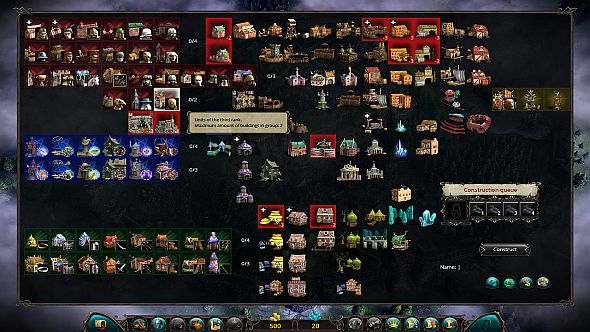
All 13 highlighted buildings PLUS at least 7 more must be constructed to be able to recruit these Executioners (tier 3)
While I enjoyed the astral mode, the campaign story, the combat, and the random events, the repetitiveness of the steps to conquer a shard has worn out my will to go on. While I hope to some day reach at least one of the game’s endings, I just can’t fathom playing it again after that. Sadly, I like the story and interactions and would like to see them through, but not even a search of the web could provide much detail on the storyline and endings. Spoilers beyond mid game seem very hard to come by. I suspect not many people have made it that far, if steam achievement statistics can be believed.
I’ll concede that perhaps playing on beginner rather than expert would have been the better choice. Though I can win on expert, it may not be worth the trouble if the story is what you’re after. Finances are extremely tight at these difficulty levels, and I’ve found that losing even a single battle near the start of a shard can put you in a hole you may never recover from. Reloading is something I’ve had to do quite often. I’d advise those interested to push pride aside and start on the easiest difficulty. Even at that difficulty I’ve seen some people mention the game is too hard.
Information is far too obscure in this game. You’ll often be given event choices you will know nothing about, and even choosing the “correct” one can sometimes penalize you. Randomness can be a good thing, but in a game all about starting from scratch again and again, it can also be devastating if it comes too early and hits too hard. You’ll also encounter monster lairs that simply say “Orcs” defend it, only to find out they also have an ogre alongside them. It’s not until you try to attack that you’ll find this out, and even still you’ll only know there are 8 units, including orcs and ogres, but you won’t know how many are ogres and how many are the much weaker orcs until the battle starts. You can retreat at this point, and I often do, but it costs you a turn. While an experienced player will know how tough a “Brethren of Light” or “Cutthroats” guard is to defeat, a new player is going to have to use trial and error. It’s likely going to cause you to reload quite a lot. The game does sometimes issue an assessment on how likely you are to win an encounter, but this assessment does not take every aspect of the game into account. For instance, I was able to defeat enemies with a necromancer hero summoning zombies that the game thought I had no chance against.
I encountered quite a few bugs during my time with Eador. The worst of these by far was the one that caused me to stop playing the game after 30 hours months ago, only to restart more recently. Karma, one of the essential features of the game, and one that directly influences your reputation with other masters in the astral, was not carrying over properly from the shards to the astral. What this meant was that you could be as nice or as evil on the shard as you wanted to be, and once you finished the shard, you were still considered relatively neutral. They did patch this and it is fixed now though. Aside from that, I’ve seen several crashes while loading save games. I’ve seen a repeatable freeze/lockup when I had a rebellion in a province. I’ve seen a unit die in combat and then still attack as a pile of bones. I’ve seen combat lock up to where not even the quick combat option would end things for me. I’ve seen blank icons and “No Description” tooltips listed for certain events that already occurred in some locations. These were generally annoying rather than game-breaking though. I don’t think there are any game-breaking bugs remaining, at least, I didn’t find any during my numerous hours.
The enemy master AI also seemed to stagnate on several shards. I’d have leveled heroes using up to tier 3 heroes, over a dozen provinces, and after a long grueling battle through some very tough neutral provinces in-between us, I expected a tough fight from my opponent. Instead, I found that the AI had only a few provinces near its capital, and a very weak hero with nothing but initial tier 1 units. The biggest challenge on many of the shards was the neutral province guards rather than the AI heroes. On a few other shards, the AI did have some higher level heroes and put up a fairly good fight. This led me to believe the AI had on some shards overextended itself, attacked something it wasn’t ready for, and bankrupted itself until it could no longer fund any advancement. This is just my assumption, but it seemed plausible given the AI master’s state in several cases.
Final Words
Eador: Masters of the Broken World features the longest campaign I’ve seen in a strategy game. Even a single campaign is going to take many, many hours. It has also done an excellent job at bringing RPG elements into the genre through the use of its unique setting and characters. I’ve played a lot of strategy games over the years, but I’ve never played one quite like Eador. There were numerous moments when I really enjoyed playing this game.
While I personally found its campaign design to be frustratingly repetitive, I am sure there are some who will enjoy this mechanic. While a lot of strategy games involve starting new games from scratch, Eador’s shards are numerous and less time-consuming than a grand 4X strategy game would be. This leads to you often finishing shards just as you’ve started developing your economy and war machine, only to thrust you back in with nothing again after only a few hours. I didn’t feel like I had a lot of time with my new toys. Yes, I could have dragged out my stay on a shard to use them, but there is little benefit in prolonging your stay on a shard, and in fact, due to the game length, I’d advise against it. I don’t feel the majority of gamers are going to enjoy this level of repetitiveness. In addition, the game is quite difficult at the start and an overall lack of information and necessity for reloads will turn many people off.
Ultimately, despite some great innovations and mechanics in certain areas, I’ve unfortunately found myself burnt out on Eador long before I’ve finished saving it from the grip of Chaos.
|
Space Sector score:
7.5/10
good
|
|---|
| The Good: – Integrates strategy and rpg elements into an intriguing campaign and story – Numerous endings and game length that could keep you busy for hundreds of hours – Tactical combat is in-depth and well-balanced – Unit development is meaningful and their abilities introduce interesting tactical choices – Karma system that tracks every action you take and a world that reacts to it |
| The Bad: – Even hardcore strategy gamers will find the campaign repetitive – Higher level schematics take forever to build due to seemingly endless prerequisites – Random events can sometimes be a bit too unforgiving for a game this long – Too much information is hidden from the player unnecessarily. Frequent reloads almost seem required/expected. – Questionable enemy AI at times makes you feel like the environment and neutral enemies are the larger threat |
Keith Turner, also known as aReclusiveMind here on SpaceSector, has been an avid gamer ever since he first laid his hands on a Commodore 128 in the mid 1980s. He enjoys multiple computer game genres, but his primary interests are in deep strategy games, 4x games, rpgs, and action rpgs. He enjoys writing and hopes to contribute with additional reviews, previews, and informative AARs to the community. See all Keith’s posts here.
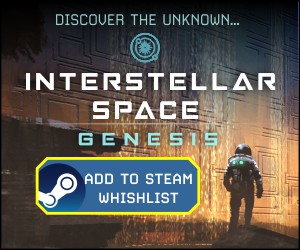
23 Comments
Related Articles:
- Eador: Masters of the Broken World Released
- Eador: Masters of the Broken World – Free DLC and Sale
- Eador: Masters of the Broken World Beta Preview
- Worlds of Magic: Master of Magic Spiritual Successor Aspirant
- Worlds of Magic Alpha Gameplay Teaser

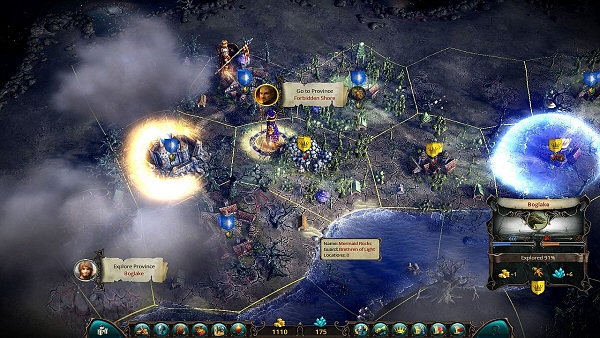
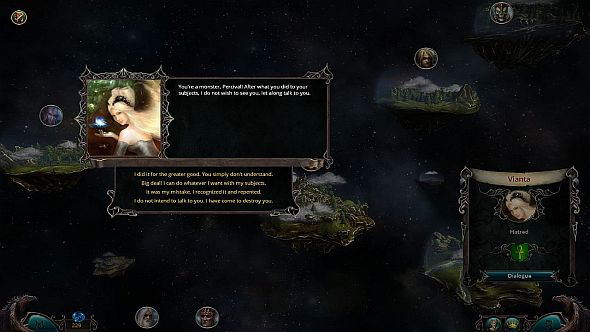
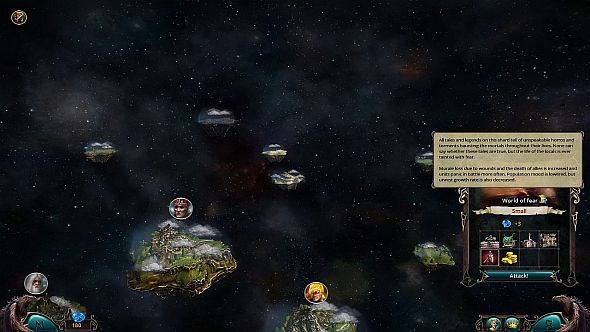
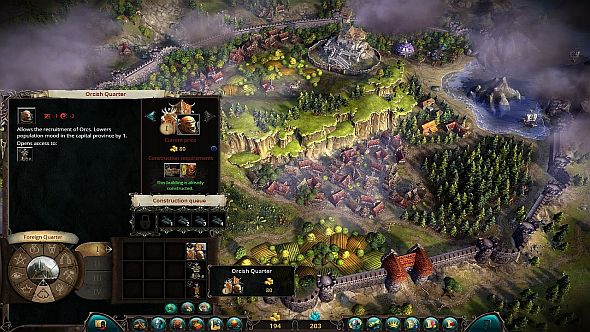
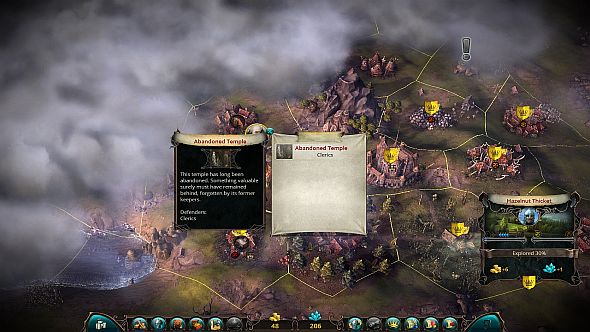
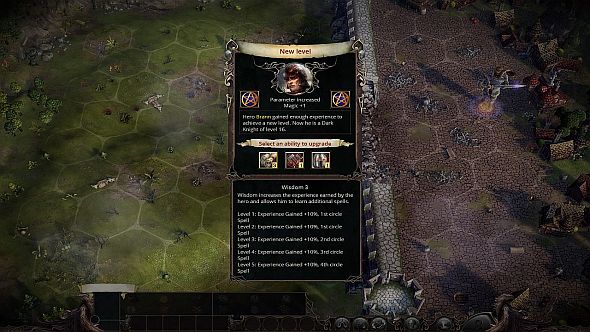
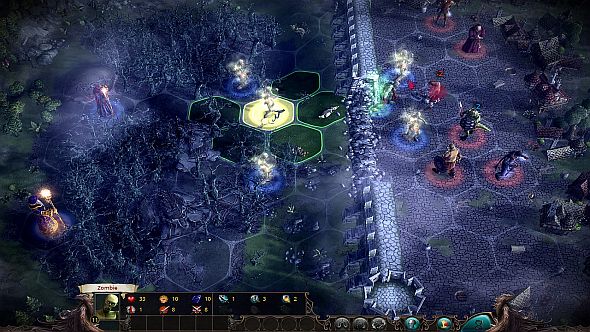
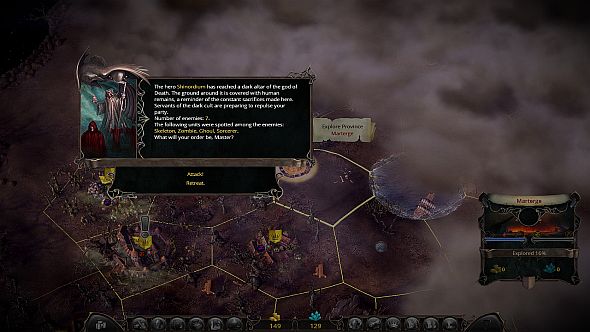
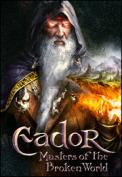
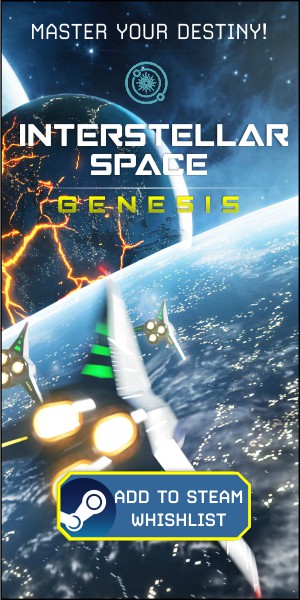
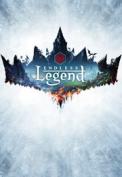

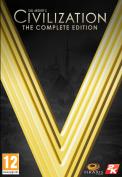


Once again, an excellent and thorough review. Saves me money. Seems like if there was an option for an open 4X option, the game might be better, at least until the (what might be) endless end game.
Thanks Xyggy, I’m glad the review helped you make a decision. Appreciate the comment.
Ive never played rhe campain…the normal 4 x game is quite fun.
Thanks for the comment. I agree that the shard gameplay is enjoyable, but I wouldn’t want to play it more than once or twice. I certainly wouldn’t recommend it to anyone for the asking price to only play custom shards. Maybe if multiplayer shard play were available, depending on how well it was implemented.
Nice review overall – one point worth making though is how similar MotBW is to the previous game Eador Genesis. Essentially it’s Genesis with a new UI and no (detectable) gameplay or campaign changes. Now Genesis’ weakest point was its graphics (comparable to Heroes of Might and Magic III with less animation) but MotBW does exact a high price for its prettiness. Aside from costing far more ($19.99 compared to $5.99 for Genesis from GOG) MotBW is far slower with longer load times and a pathetically low framerate (I’m seeing 15fps with a 580GTX graphics card at highest settings and 2560×1600 resolution – framerate usually doesn’t matter for strategy games but when its this low it does become distracting).
Recent updates do seem to have helped in some areas (and I waited till MotBW went on sale for $13.99 before buying – missing out on the worst bugs) but I would still say to anyone considering this, get Genesis first. By the time you’ve finished that, PC technology will have progessed to the point where you can get a system powerful enough to run MotBW as smoothly. ;)
Thanks for the comment and your comparison to Eador: Genesis. Everything I’ve heard and seen indicates that mechanically it is almost the same game. I do believe a couple of the most recent patch additions differ from Genesis. Namely petrification immunity, entanglement immunity, and an aura of healing ability have been added and made available to certain units. Other then that though, even the appearance of the masters seems identical in many cases, if not all.
I didn’t experience the same issues as you frame-rate wise, but then again I don’t have a monitor with a resolution that high. That may be the biggest difference. Also, I am running a GTX 660 Ti.
You made a wise choice waiting until the sale to pick it up. As I mentioned, the game had some serious issues early on. Karma not carrying over killed my first campaign. You grabbed it at a good time. As for price, well I’d say someone who enjoys Eador’s gameplay would easily get their money’s worth out of Masters of the Broken World. If you spent the hundreds of hours required to complete it once or twice, I imagine you’d be looking at less than $.10 per hour. Genesis would be significantly less than that, true, but it’s still a small price to pay for the graphical upgrade.
Thanks again for sharing your experience! :-)
Keith,
When comparing the speed of play of “Eador: Genesis” to “Eador: Masters of the Broken World”, it’s not just about the graphics rendering frame rate. Genesis is just generally faster. Character animations take up much less time, the AI is faster, movement takes much less time, loading times are shorter… As a comparison: in 80 hours of Genesis, I have nearly completed the campaign. In 137 hours of MoTW, I’m only about 50% through the campaign!
I would definitely recommend Genesis over MoTW because, as others have said, they’re mechanically very similar. The only major differences in gameplay between the two that I’ve noticed are the varying types of shards that are in MoTW (World of Dead, World of Deserts, World of Fear, etc.) and the change in the save system (you can load and save at will instead of just the last turn). Also, at this point Genesis is more stable as well. MoTW always crashes when I quit, and it sometimes slows my computer down to a crawl until I force-quit it.
“Genesis is just generally faster. Character animations take up much less time, the AI is faster, movement takes much less time, loading times are shorter…”
I’m with you there on general game speed – it’s worth noting for both games that combat animation speed can be adjusted (and it’s well worth increasing it!). MotBW does support widescreen displays which may be significant for those who can’t bear the left/right black bars resulting from Genesis’ 4:3 display but MotBW’s UI manages to make this a disadvantage by showing key information (like province details) in the corners with no option to move them. In fact MotBW’s UI is surprisingly inflexible given it’s recent release – it should be possible to move province info screens and conversation/tutorial windows but it isn’t.
The biggest UI problem with both games in my view is the lack of a log. Given that several events can happen between turns, there really needs to be some way of reviewing them (a list sortable by time and province) so that those requiring future action (quests, invasions, etc) can be followed up. Currently you have to use pen-and-paper/keyboard-and-Notepad.
And finally neither game is documented adequately. Genesis had no information at all, but MotBW’s manual is greatly lacking given the complexity of the game.
@bubicus: Interesting to know that the speed is that dramatically different between the two games. Thank you for providing the comparison between your two campaigns, it certainly helps put things in perspective. Your MotBW time confirms what I’ve seen in other places and may also explain why I’ve found so little info out there on the endings and mid to late game plot points.
@AstralWanderer: I agree on the lack of a log and lack of documentation as well.
Recently spent some time comparing Genesis with Broken World again and one positive UI benefit that’s worth highlighting in the later game is the information displayed in combat. Every unit has health, stamina and morale bars visible at all times whereas in Genesis, you have to right-click on each unit to get this information. That’s a big convenience feature.
Another thing is that apparently the Broken World campaign is shorter than Genesis (which apparently can last 45-60 shards). Since I like to “mine” each shard for all its goodies (building schematics do get carried forward to future shards), I doubt I’ll be able to check that by the end of the century. ;)
Haha, sounds like you are in it for the LONG haul then. If you can remember (not sure how long it might be…), please come back and fill me in on which ending you chose and how things played out. I’d love to know more about the storyline.
Tactical combat is certainly a strong point for Eador, and I agree that the presentation of the information is very clear and well presented in Masters of the Broken World. It’s good that they have at least enhanced upon the original in aspects that weren’t noticeable at first glance.
Great review Keith! Will have to check it out since GOG gave me a notification saying its been updated. From the start until like a couple of months back, the game was just “the broken world”. I am hoping it would be Masters of the broken world by now. I was a little worried about the time limit that I just read about recently. Some say that there is limited number of turns in the astral for genesis and motbw or something but I haven’t checked the game in quite awhile.
Thanks for the comment and kind words! You are correct, there is a turn limit within the Astral. Turns taken on an individual shard don’t matter, you can take hundreds there if you want. When you return to the astral, only one turn will have passed.
On Expert difficulty, I just tested and confirmed that it ended on turn 65 with a warning 10 turns earlier at 55 from the gremlin that chaos was coming. On easier difficulties, I believe it is closer to the 80s range, but can’t confirm. I was on turn 14 or 15 with 14 shards taken before I started clicking next turn rapidly in the astral to test, so even 65 takes awhile to get to normally.
On a side note, the uhh… loss that I saw from Chaos taking over was quite anti-climatic. No video or anything of that sort, just a status screen showing my score and explaining in a brief paragraph or two what occurred due to my failure to find an answer. Hope the victory endings are bit more exciting.
Keith wrote “Thanks for the comment. I agree that the shard gameplay is enjoyable, but I wouldn’t want to play it more than once or twice. I certainly wouldn’t recommend it to anyone for the asking price to only play custom shards.”
Erm..the game is 20 bucks..often less given the propensity of sales..thats like the cost of one dinner..one trip to the movies..a pair of pants at walmart..20 dollars is not a lot to ask fora quality game with nice grphics even if you assume they only will play 1-2 times..and I think folks will get more play time out of it than that if this sorta game is their thing.
I bought the game based on your review. It was pretty good for about an hour, and then I hit a crippling bug. It won’t escape from the Garrison screen. I tried reloading and the restarting. But once the little green x box in the bottom middle of the screen is no longer green there is nothing you can do.
So I will wait a few months for a few patches and try again.
It looked like it was going to be pretty good too. Alas.
Sorry to hear you ran into a bug like that. I have seen that same bug a time or two. I think it has to do with opening menus a certain way and then clicking too quickly or in the wrong place. Never did figure out how I managed to cause it.
There were a couple of times in the 50 hours or so of play that I had to end task the game and start it back up. The good news (As good it can be seeing as though the game just had a bug for you) is that the game auto-saves every turn and keeps 3 or 4 autosaves of the prior turns. I found that if I just reloaded the last autosave I would be back up and running in no time. The garrison function normally works fine, but it may depend how you are getting to it. For instance, from within the city menu, from the main UI button when looking at the shard itself, or from the hero’s contextual menu.
Another thing that will occasionally crash the game is reloading the last autosave while still in a battle. It didn’t happen that often, but sometimes the game would freeze. Again, I used the autosave reload to resolve and keep playing after killing the program via task manager and starting again.
“…the game auto-saves every turn and keeps 3 or 4 autosaves of the prior turns…”
This is actually one significant improvement over Eador Genesis, which had one autosave file only. In addition, MotBW keeps campaign autosaves taken before starting each shard.
I recently encountered something similar, where the game would display the hourglass cursor indefinitely just after the AI turns (I’m guessing something one of the AI players did hit a bug). The only way around it was to go back 4-5 turns and replay them (thank goodness the save system allowed it) and this was with the current 1.1.3 version.
So it probably pays to be paranoid about backing up old MotBW save games.
Thanks Kieth.
Reloading didn’t seem to help. I will try going back a few saves.
Great review.
yours
Sam
Soo much true about the repetitiveness… that is why I gave up the game after couple shards. Its just to disappointing to level up over and over.
So word of advice: skip the campaign, play just a huge shard in “skirmish”….
Good reviews, good points, I’ve yet to encounter any real crippling bugs (thankfully), my biggest complaint is that I’m on dual monitors (Eador on one, internet or whatever on the other), and when you click on the non-Eador monitor it causes Eador to freeze until it gets focus again. This makes sense if you have one monitor, but for two monitors it should give you the option to allow the game to continue even if the app doesn’t have “focus”.
Can someone explain the schematics a bit more to me? I got one in the first level of the campaign and didn’t use it so am I SOL? Are these like secrets that I need to try and unlock before beating each level?
[e] Also, great review. I had already bought the game before reading this, but it was a good review nonetheless.
There are two types of schematics in Eador:
* Province building schematics which are single-use – these allow you to place a “special” building (dark tower, secret monastery, etc) in a province which offers increased bonuses (and sometimes penalties) over standard buildings. There is a limit of 3 buildings per province, including such specials and these schematics do not carry over to other shards.
* Stronghold additions – these provide access (assuming you have the pre-requisites, which can include other buildings) to stronghold enhancements. These do carry over to other shards, but according to one poster at the GOG forum, you only get these for enhancements offered when you conquer the current shard, i.e. they provide early access to a shard reward.